Lumbar Spondylosis Treatment in Frisco & Dallas
Lumbar Spondylosis, Arthritis of the Lower Back, Lumbosacral Spondylosis, Lumbosacral Spondylosis Without Myelopathy
Chronic lower back pain is a frustrating thing to live with. It can limit your ability to enjoy life to the fullest and prevent you from engaging in activities you once enjoyed. Lumbar spondylosis is one source of back pain that is unfortunately common in adults aged 60 and over. Even generally healthy people experience the degenerative process in their spine over time. This happens due to the normal wear and tear on the body’s systems.
At SPORT, we have extensive experience treating a number of degenerative conditions, including the following.
- Spinal stenosis
- Cervical stenosis
- Degenerative disc disease
- Chronic low back pain
- Herniated disc
- Spinal cord compression
- Cervical spondylosis
- Spinal osteoarthritis
- Pinched nerves
If you fear you may be suffering from lumbar spine spondylosis, please contact our Dallas orthopedic specialists and physical therapists. We can both diagnose and treat your condition with only the best in medical technology. Contact our office today at 469-200-2832 to schedule with us.
What Is Lumbar Spondylosis?
The age-related degeneration of the spine in the lower back is called lumbar spondylosis. Specifically, the degeneration occurs in the vertebral bodies and intervertebral discs in the spinal canal. This condition is often confused with or interchangeably referred to as degenerative disc disease and osteoarthritis.
One notable attribute of lumbar spondylosis is the breakdown of one intervertebral disc or multiple discs. Because these discs provide cushioning for the spinal nerves, the degenerative changes in these discs can lead to back pain.
How Common Is Spondylosis?
According to the American Academy of Orthopaedic Surgeons, approximately 85% of adults over 60 will experience symptoms of spondylosis, whether cervical or lumbar. That’s an alarming percentage of the general population. However, it does make sense. Lower back pain and neck pain are common reasons for missed work in the United States. This applies to both blue-collar jobs and white-collar jobs.
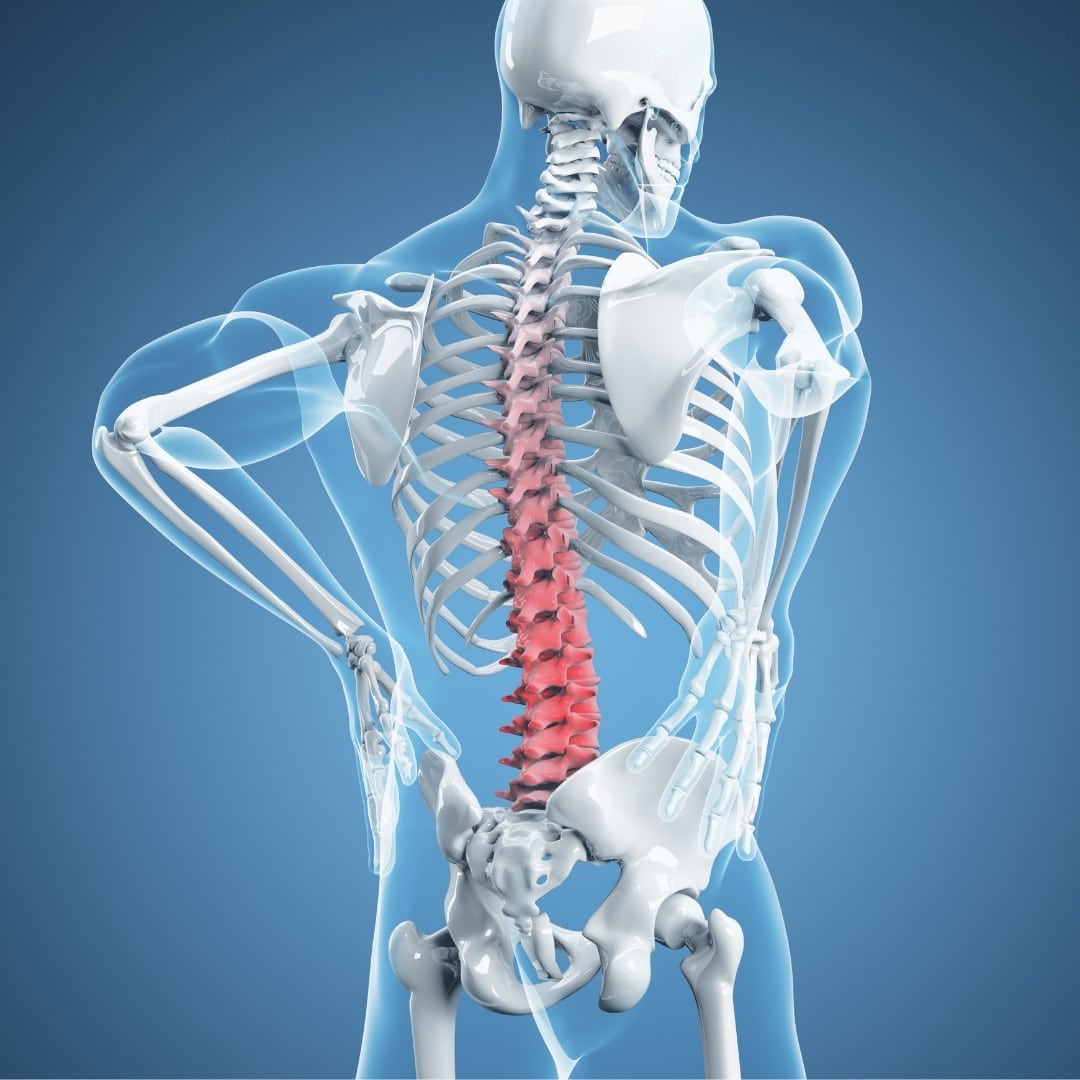
Types of Lumbar Spondylosis
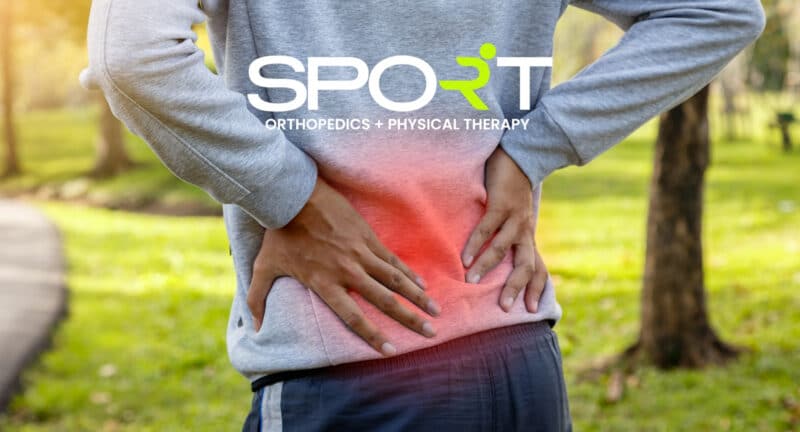
Spondylosis generally affects the facet joints, nerve roots, sacroiliac joints, and other parts of the lumbar anatomy. In other words, it is more common to experience spondylosis in the lower back than in the upper back and neck. Below, we list two specific types of spondylosis that affect the lumbar supports in the spine.
Lumbosacral Spondylosis
This is lumbar spondylosis that also affects the lumbar region and the sacrum, as well as the associated nerves and associated joints. It does not involve nerve compression (myelopathy) but still produces pain symptoms.
Lumbosacral Spondylosis Without Myelopathy
This is lumbar spondylosis that affects the lumbar spine and the sacrum. However, this does involve nerve compression or myelopathy. This compression of the sacroiliac and facet joints can produce chronic pain in the spinal nerve roots of the lower back.
Lumbar Spondylosis Symptoms
It’s important to understand what your symptoms mean when you experience back pain, neck pain, spine pain, or other spinal problems. Lumbar spondylosis produces many symptoms that are similar to other back problems. It can even cause radiculopathy, which is pain that radiates from one part of the body to another. These symptoms are as follows.
- Neck pain
- Leg pain
- Back pain
- Cauda equina syndrome
- Muscle spasm
- Grinding or popping feelings in the back when you sit or stand
- Feelings of numbness or tingling in the toes, feet, legs, or lower back
- Pain radiating to the buttocks
- Sciatic nerve pain
One rarer, more severe symptom is a loss of bladder or bowel control. If you experience this symptom, we recommend seeking a clinical diagnosis for your pain. Patients suffering from spinal cord pain deserve to have their symptoms evaluated by a qualified pain physician.
What Causes Lumbar Spondylosis?
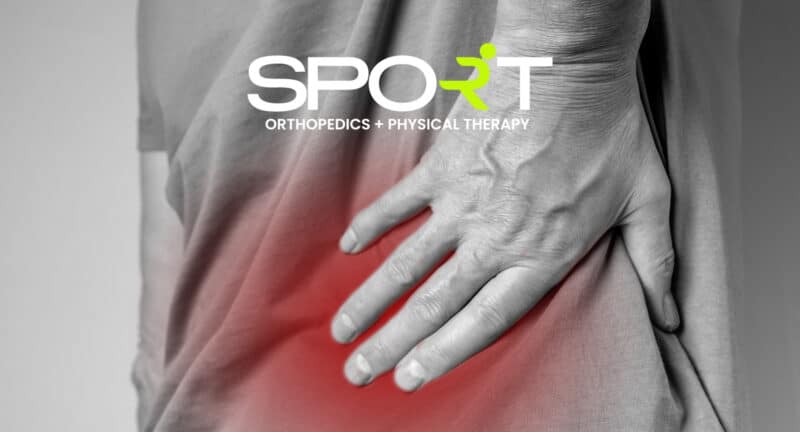
For the most part, spine degeneration is a normal part of the aging process. However, the side effects of this degeneration can produce pain and stiffness in the lower back. Some of these side effects include bone spurs, ligament stiffening, herniated or bulging discs, and dehydrated discs. All of these side effects can send pain signals to the back, legs, and buttocks.
Risk Factors for Lumbar Spondylosis
As we stated before, spondylosis of all types occurs mostly due to either age-related degeneration or degenerative conditions affecting the spine. However, each individual has certain risk factors that may apply to them. These factors include the following.
- Genetic predisposition
- Being overweight or carrying excess weight from pregnancy
- Engaging in a sedentary lifestyle
- Having sustained a spinal cord injury or having undergone spine surgery
- Smoking cigarettes
- Working a job that requires you to perform repetitive or weight lifting movements
- Anxiety or depression
- Psoriatic arthritis
How to Prevent Lumbar Spondylosis
Now that you understand how spondylosis happens, you can take steps to reduce or eliminate your risk of lumbar spondylosis. We recommend the following preventative measures.
- After you visit with your doctor, follow their treatment plan and physical therapy recommendations as closely as possible.
- Practice proper posture and positioning of your body
- Learn to lift heavy objects with your legs, not your back
- Regularly engage in exercise
- Eat a well-balanced diet
- Maintain a healthy weight
- If you are a smoker, try to stop smoking.
- Avoid consuming an excessive amount of alcohol
- Rest for an appropriate amount of time each day
How to Diagnose Lumbar Spondylosis
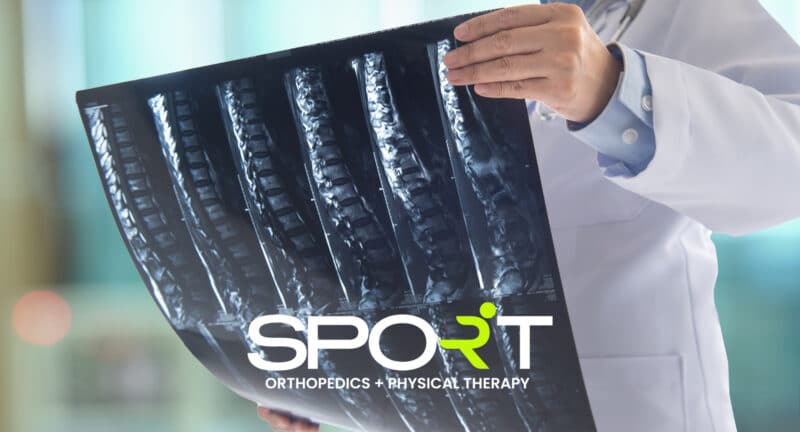
In order to achieve an accurate clinical diagnosis of your condition, we recommend seeing a musculoskeletal medicine specialist. When you come to SPORT for diagnosis and treatment, we will begin by taking a medical history. Then, we will perform a physical exam. This exam may involve spinal manipulation or moving the spine around to assess pain sources. We may also order the following imaging tests.
- X-rays
- CT scans
- Magnetic resonance imaging (MRI) tests
Treatment Options for Lumbar Spondylosis
The good news is that any disability and pain symptoms resulting from spondylosis can be treated with conservative methods in most cases. However, the treatments that we recommend for you will be largely based on your symptom severity. They will also be based on how your condition responds to non-invasive treatments. Below, we list the most popular ways to treat spondylosis.
Non-Surgical Treatments for Lumbar Spondylosis
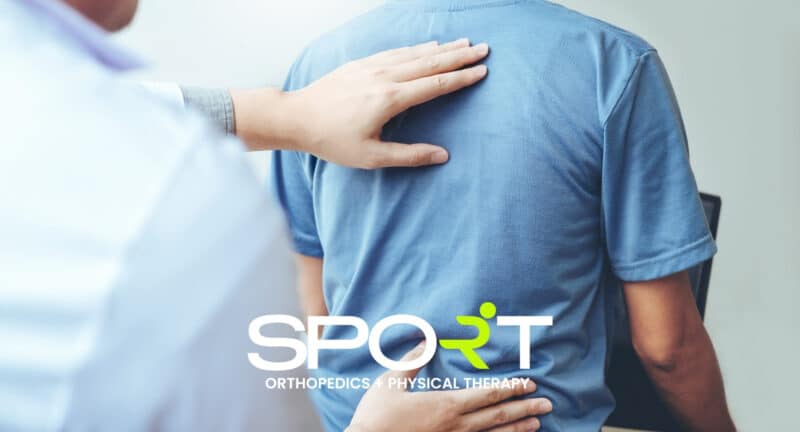
Most patients experiencing lumbar spondylosis can achieve relief with the following treatment methods.
- Muscle relaxants
- Pain medications
- Heat and cold therapy
- Physical therapy
- Trigger point injections
Surgical Treatments for Lumbar Spondylosis
If conservative treatments aren’t enough to provide pain relief, surgical intervention may be necessary. Patients who still experience pain or restricted mobility may find relief in the following ways.
- Surgery to remove bone spurs
- Spinal fusion, which will limit spine motion
- Diskectomy of the affected disc
- Fracture surgery to repair damaged vertebrae
- Bone graft surgery, which often goes along with the fusion of the spinal column
Speak with your trusted orthopedic surgeon to determine which treatment plan is right for you.
Contact SPORT Orthopedics and Physical Therapy Today
At SPORT Orthopedics and Physical Therapy, we take great pride in our ability to help patients suffering from leg pain, bone spurs, and spinal canal pain. We understand that pain around or in the spinal cord can greatly affect how you live your life. That’s why we’re here to offer only the best in diagnostic and treatment care. To schedule an appointment with our Dallas physical therapists and surgeons, please call 469-200-2832 today.
Other Conditions We Treat Include:
- Herniated discs
- Cervical stenosis
- Sciatic nerve pain
- Cervical spondylosis
- Spinal fractures
- Osteoarthritis
- Upper arm pain
- Leg pain


